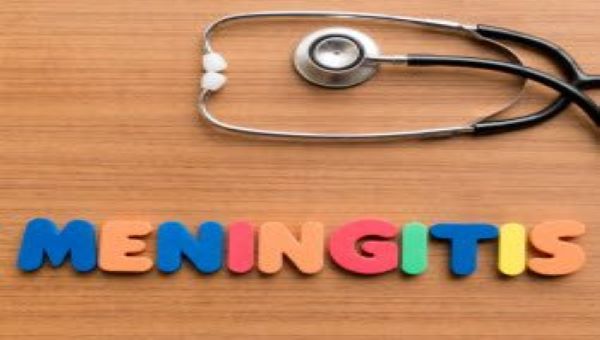Know more about tuberculosis
Apr 22, 2022
TUBERCULOSIS
INTRODUCTION
Tuberculosis is one of India's major public health problems. According to World Health Organization (WHO) estimates, India has the world's largest tuberculosis epidemic. In 2020, India accounted for 26% of the incident TB cases across the globe. TB statistics for India for 2019 (the latest available) give an estimated incidence figure of 2.64 million cases. This is a rate of 193 per 100,000 population.
Tuberculosis (TB) is caused by bacteria (Mycobacterium tuberculosis) that most often affect the lungs. Tuberculosis is curable and preventable.
TB is spread from person to person through the air. When people with lung TB cough, sneeze or spit, they propel the TB germs into the air. A person needs to inhale only a few of these germs to become infected.
About one-quarter of the world's population has a TB infection, which means people have been infected by TB bacteria but are not (yet) ill with the disease and cannot transmit it.
People infected with TB bacteria have a 5–10% lifetime risk of falling ill with TB. Those with compromised immune systems, such as people living with HIV, malnutrition or diabetes, or people who use tobacco, have a higher risk of falling ill.
When a person develops active TB disease, the symptoms (such as cough, fever, night sweats, or weight loss) may be mild for many months. This can lead to delays in seeking care, and results in transmission of the bacteria to others. People with active TB can infect 5–15 other people through close contact over the course of a year. Without proper treatment, 45% of HIV-negative people with TB on average and nearly all HIV-positive people with TB will die.
Symptoms and diagnosis
The majority of people exposed to the bacteria don’t experience tuberculosis symptoms right away. Instead, the infection may go through three stages:
Primary TB Infection This is when the bacteria first enter your body. In many people, this causes no symptoms, but others may experience fever or pulmonary symptoms. Most people with a healthy immune system will not develop any symptoms of infection, but in some people, the bacteria may grow and develop into an active disease. Most primary TB infections are asymptomatic and followed by a latent TB infection, according to the Centres for Disease Control and Prevention (CDC).
Latent TB Infection The bacteria is in your body and can be found through tests, but is not active. During this stage you don’t experience symptoms and can’t spread the disease to others, notes the National Library of Medicine.
Active Disease The TB bacteria are active and multiplying. You’ll feel sick and will be contagious. It’s important to seek immediate treatment to avoid complications and infecting others.
The symptoms of active tuberculosis include:
- A general sense of being unwell
- Coughing
- Coughing up blood or phlegm
- Chest pain
- Trouble breathing
- Loss of weight and appetite
- Night sweats
- Intermittent fever
- Generalized body aches
- Fatigue
Diagnostic tests used for TB include:
- Sputum Samples Sputum is the mucus that comes up when you cough. Samples of sputum can be directly examined in a lab for M. tuberculosis.
- Molecular Tests These can be used to detect the bacteria's genetic material and help identify which antibiotics will work best.
- Biopsy A biopsy of the lungs, lymph nodes, or other tissues may be cultured to grow the bacteria and make it easier to see under a microscope.
Imaging tests used for TB include:
- X-rays Chest X-rays may be done to look for signs of TB in the lungs.
- Computerized Tomography (CT) Scans CT scans may be used to look for TB in the spine or to get better views of the lungs if X-ray images are unclear.
- Magnetic Resonance Imaging (MRI) An MRI of the spine or brain may be done if doctors think the tuberculosis infection has spread to those areas.
- Bone Scans These can be used to tell the difference between cancerous lesions and those caused by TB.
Common symptoms of active lung TB are cough with sputum and blood at times, chest pains, weakness, weight loss, fever, and night sweats. WHO recommends the use of rapid molecular diagnostic tests as the initial diagnostic test in all persons with signs and symptoms of TB as they have high diagnostic accuracy and will lead to major improvements in the early detection of TB and drug-resistant TB. Rapid tests recommended by WHO are the Xpert MTB/RIF Ultra and Truenat assays.
Diagnosing multidrug-resistant and other resistant forms of TB (see Multidrug-resistant TB section below) as well as HIV-associated TB can be complex and expensive.
Tuberculosis is particularly difficult to diagnose in children.
Treatment
TB is a treatable and curable disease. Active, drug-susceptible TB disease is treated with a standard 6-month course of 4 antimicrobial drugs that are provided with information and support to the patient by a health worker or trained volunteer. Without such support, treatment adherence is more difficult.
Since 2000, an estimated 66 million lives were saved through TB diagnosis and treatment.












